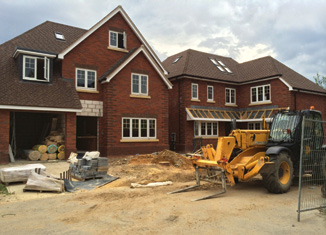The 2010s were an interesting time for the property sector, rising out of recession with the market cooling again due to Brexit uncertainty. Perhaps with the new government assuming power and things surrounding Brexit becoming clearer, more positive trends will develop.
We’ve seen a shift in some long-held attitudes such as a growing awareness of climate change and the need to mitigate its challenges by adapting our built environment with ‘retrofit’ a key discussion point. With regard to solving the housing crisis, the government throws around numbers easily (e.g. 100,000 homes a year), without providing a masterplan as to how this will be achieved.
One question which has knocked about for the last decade, is whether addressing urban sprawl through the capital’s greenbelt policy is justified in the face of a housing crisis. Towards the end of 2019, a number of pieces in business publication City AM called for the new government to reconsider the status of the greenbelt with a view to relaxing current planning laws and restrictions. I felt some of the arguments presented were short-term and didn’t fully consider the other options available. Particularly, they failed to take into account the societal ramifications of developing this protected area and the long-term future for London and other cities.
We now have a chance to reframe our approach to building and the increasing population of our cities. We need to develop a strategy that retains the greenbelt, instead increasing the density of our cities on brownfield and already developed sites.
Densification
We need to start by re-evaluating our existing building stock. Densification is beginning to be seen as a more sustainable way forward. It’s also a solution where sustainability goes hand in hand with designing for well-being. Our existing building stock offers many opportunities for enhancement and desensitisation, but demolition and redevelopment is often seen as the easier route. Unfortunately, the current approach to taxing new build at 5% and refurbishment at 20% helps to justify this. The government should reconcile this to promote retrofit over new build.




















